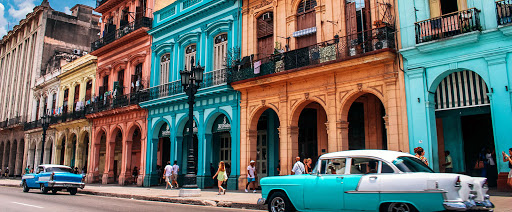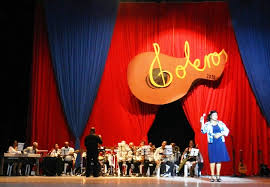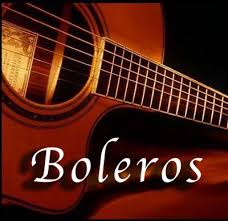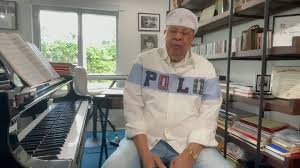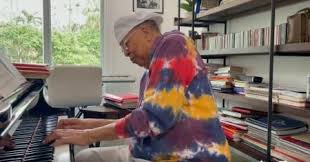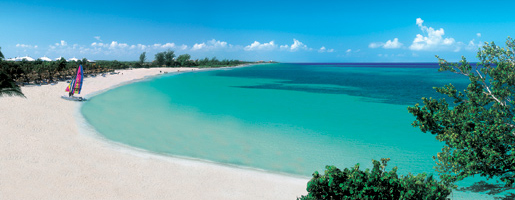

 SAGUA LA GRANDE, CUBA, IMPORTANT COMMERCIAL CENTER. SAGÜERO. PHOTOS/ VIDEOS.
SAGUA LA GRANDE, CUBA, IMPORTANT COMMERCIAL CENTER. SAGÜERO. PHOTOS/ VIDEOS.
Sagua la Grande, sometimes shortened in Sagua, is a municipality and city located on the north coast of the province of Villa Clara in central Cuba, on the Sagua la Grande River. The city is close to Mogotes de Jumagua, limestone cliffs. Many cays of the Sabana-Camaguey Archipelago are located off the northern coast.
HISTORY
Sagua la Grande was founded in 1812 and established as a municipality in 1842. By the beginning of the 20th century, the city and its port (Isabela de Sagua), were an important commercial center. Presently, its economy is based on the sugar, chemical, mechanical, and food industries. Cattle raising and fishing are other important economic activities.
Two city historians are notable. Antonio Miguel Alcover Beltrán left to the inheritance of the events related to the 19th century thanks to his personal interrogations to each one of the authors of history; and at the moment Pedro Suárez Rojo (Tintín) has been in charge to rescue all 20th century and leaves from the 21st century in his famous “Tintin Collection” that includes newspapers, books, photos, films and videos of all the historical events of the referred time.

Until the 1977 municipal reform, it was divided into the barrios of Baire, Calabazar de Sagua (now part of Encrucijada), Chinchila, Este, General Nodarse, Isabela de Sagua, Jumagua, Malpáez, Oeste and Sitiecito.
GEOGRAPHY
Located northwest of its province, close to the Atlantic Coast, Sagua borders with the municipalities of Quemado de Güines, Santo Domingo, Cifuentes and Encrucijada. It counts the villages of Isabela de Sagua, La Rosita, Nueva Isabela, Playa Uvero (or Uvero), Sitiecito and Viana. Isabela, located by the coast, is the largest village and a port town.
DEMOGRAPHICS
In 2004, the municipality of Sagua la Grande had a population of 56,097. With a total area of 661 km2 (255 sq mi), it has a population density of 84.9/km2 (220/sq mi).
ARCHITECTURE
The city’s wide streets and little traffic give it a calm atmosphere.
In recent decades there has been a lack of new construction. Consequently, the older buildings leftover from colonial times, are in a state of decay. One of the most beautiful buildings in this city, El Casino Español (The Spanish Casino) built-in 1908, was the meeting place for the Sociedad Sagüera (Social Club of Sagua).
https://youtu.be/IN7f1JNdwiU
(Press ^ Here)
Sagua la Grande, Cuba.
COLONIAL TIMES
The architectural and urban evolution of Sagua la Grande is the result of an economic development favored by the natural conditions of its soil, its privileged geographical position with respect to trade, and political and social events from its foundation to the present.
In this respect, in 1830, only 18 years after its foundation, it was already the economic center of a region with more than 26 sugar mills, which from the architectural point of view, favored the evolution of the typology of housing, with the insertion of residences of masonry, but still predominate, wood and tile, as well as mud and guano. In this period the first cemetery is built, the first administration of post office of the town, the first school is founded by José Cabrera, who was later proposed, member of the Real Sociedad Patriótica de la Habana, by José de la Luz y Caballero.
In 1841 there were already 1216 inhabitants in Sagua distributed in 253 houses, 4 high buildings of masonry, 113 of boards and tiles, and 115 of busbar and guano. A year later the arms command appears. The buildings of this stage were characterized by their simplicity and sobriety, housing as a fundamental theme of the urban fabric expresses in their facades the molded cornices, designed in a very varied way, giving it a very particular seal the coat that repeats itself in a very varied way. Beauty is removed to the interior in the central courtyards, hangings, colorful stained glass windows, and spacious halls. The monumentality of some constructions does not manage, however, to hinder the harmonic image of the surroundings, this is the case of the house of Count More built during the ’70s in the XIX century whose owner was the founder of the railway in the region and a prosperous merchant.
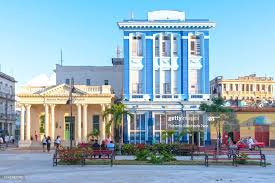
The first streets followed spontaneously, many of them going perpendicular to the river, which determined the anarchy of the initial urbanization, which after the layout of 1849, made by Rodrigo de Bernardo y Estrada, took neoclassical characteristics, interpreted in the width of the streets and the orthogonality of their blocks. These followed the sinuosities of the river, due to the fact that the village had been formed from the felling of wood, and later the tobacco agriculture, which depended on the proximity of the river since it was the main export route.
In 1850 the Spanish soldier Joaquín Fernández Casariego was assigned to the post of Lieutenant Governor, who exempted Don Matías Lievana from the post. With Casariego in the jurisdiction, the decade of 1850 was transcendental in the development of Sagua, because the sewage system of the city was constructed, the first streets were paved, studies were consummated for the communication of the village with the rest of the country, the first director plan for the urban growth was carried out, and the hotel’s Ambos Mundos and Cuatro Naciones were erected, the construction of the public jail was finished and its square, in 1856 the railroad is founded, the first Bank arises in 1857, the first printing press was born, and with it the newspaper of the village. The coat of arms of La Ciudad de Sagua la Grande was created in 1863.
The Parish of La Libertad Park, built-in 1860, is one of the most prominent neoclassical exponents in the region. For this period the city showed accelerated growth, fostered by the development of regional industries, mainly sugar and its derivatives. The sugar mills had multiplied their annual production and made the trade of their product viable thanks to the arrival of the railroad. The public services had grown, occupying an area of almost 20% of the built land, electric lighting is achieved in the streets of the village, also incorporating a telephone network. With this situation, it was granted the title of Villa and acquired, in 1843, its own jurisdictional party.

By 1890 the census showed that the territory had a population of 24640 inhabitants in the Sagüero Jurisdictional Party, with 13 633 inhabitants in the city, distributed between the North, South, Coco solo, and San Juan or General Nodarse neighborhoods.
REPUBLIC
As a result of the development achieved by the city in the first quarter of the twentieth century, a series of important social works are carried out, defined by a picturesque character, and the richness in expression reached in the design, coming to find distributed throughout the city an assorted number of private dwellings with a marked architectural and artistic value. The decoration reached in elements such as grilles and dust guards characterizes the architecture in a very special way. In this stage works of great importance were erected, that in spite of the development reached in the technology, the wood continued in force in buildings like the Ladies Tennis Club and the Cinema Theater Enchantment; the first one was a multitudinous sports club of municipal scale, and the last one remained standing during almost 80 years constituting a milestone of great social value for the city. The historic center that today occupies 66 blocks with a total of 1 053 properties, 70% of them have architectural value. Three main styles stand out: eclecticism, neoclassicism, and traditional architecture.
The domestic architecture in the first decades of the century evolved within the eclectic style in its three variants such as popular eclectic that developed from 1905 to 1914, the academic eclectic from 1915 to 1920, and the eclectic evolved from 1921 to 1933, predominantly single-level constructions accentuating the horizontality of the buildings and predominating the classic elements with a much greater decoration than in the colony.
In the twentieth century begins a period of an economic boom in the town, characterized by the expansion of urban boundaries, beginning the construction of avenues (Oña, Backer, etc.). The Port of Isabela de Sagua is favored for being the closest of the country to the United States, facilitating the penetration of capital in the territory. In 1905 the bridge “El Triunfo” was built to replace the wooden bridge that joins Martí Street with Gómez Avenue (now 9 de Abril), the branch of the Royal Bank of Canada was opened and the school of Los Jesuitas was built.

The architectural wealth of the city is not limited to the Historical Center, because there are isolated groups of buildings of great value such as the Yaniz Clinic, eclectic style of the early twentieth century or the homes of the Reparto Oña, with the marked influence of the neocalifornian style belonging to wealthy families from the 20 to 40, the former Spanish Colony built in the nineteenth century and remodeled in the early twentieth century, among others. The most remarkable thing when you look at the built environment is the volume of traditional wooden buildings that are spread throughout the Historic Urban Center, including the outskirts of it. It is uncommon to find the degree of design of these buildings, in other cases of the same type throughout the country.
The Modern Movement was invigorated in the City with the economic rise of the 1950s, manifesting itself within the historic center with some buildings of various levels, which are mixed with the rest within a compact plot. There are isolated examples of modern single-family dwellings from the pre-revolutionary period, most of which conform to the common plots and respect, in most cases, the existing façade line. However, the expression of modern buildings built on the outskirts of the city comes closer to the idea of habanero residential neighborhoods, where isolated buildings prevail, determined by the use of portals, gardens, or terraces; the aqueduct was also built to the port of Sagüero on March 10, 1952 thanks to the efforts of the Representative to the House of Sagua Mr. Rafael del Busto Padín with President Mr. Carlos Prío Socarrás.
POST REVOLUTION
With the Triumph of the Revolution on January 1, 1959, numerous social works such as schools, clinics, hospitals, and polyclinics would be built, for which typical designs based on prefabricated systems would be used to this day. These works would be built far from the Historic Urban Center of the city, which is why it has been able to preserve, until today and despite the deterioration achieved, most of its built heritage prior to 1930.

Sagua La Grande in 1930.
PRESENT
At present, the city conserves the neoclassical and eclectic spirit of its urban planning and its architecture, with reduced modern incursions in its historic center that would guarantee it for the condition of National Monument granted on December 6, 2011.
ARCHITECTURAL ICONS
Among the most notable architectural and urbanistic values that reach our days, the railway terminal, the Catholic Church, La Villa de París, Palacio Arenas, the Grand Hotel Sagua, the Spanish Casino, and the home of the Count of Casa Moré, among many others, stand out.
TOURISM
Once visited by merchants and personalities of universal culture, the city exhibits profuse accommodation buildings located in privileged areas of its historic urban center, which survive the passage of time despite the abandonment or change of function suffered after the decline of the flourishing economic activity that engulfed them. Nowadays, tourism, in addition to the treasured values, is an incipient activity in the city, mostly visited by relatives of locals or guests of the neighboring Cayería Noreste de Villa Clara in its journey through the center of the country.
In addition to the city’s architectural, historical and cultural wealth, in the region of which it is the economic center, the Sagua River itself, navigable for more than 30 kilometers from the city’s shore to its mouth in the seafaring town of Isabela, famous for its oysters and its century-old port tradition; the nearby Mogotes de Jumagua, second in importance to Cuba and the last redoubt of the natural forests that gave fame to the territory in past times; the southern Sierra de Jumagua, in the westernmost of whose peaks stands the Parador La Roca, a viewpoint over the vast fluvial plain; The Alacranes Reservoir, the country’s third water mirror; the Northwest Cayería of Villa Clara, which possesses unique sea legends, boats trapped in its waters, the deepest submerged cavern of the Antillean archipelago (Blue Hole, Ojo del Mégano) and charming beaches that seduce with their isolation, their dreamy blues and their very fine white sand with a soft profile; the Elguea mineral-medicinal water spa, known internationally for the healing properties of its thermal springs, among others.

The launch of Sagua la Grande as an international tourist destination within the framework of FITCuba 2018 would mark a before and after in local history. The event, which took place on May 4, 2018, would be the result of the execution, with the decisive support of the people, of an extensive investment program aimed at restoring the city’s former splendor, an occasion that would serve for the reopening of the Gran Hotel Sagua and the inauguration of the Palacio Arenas Hotel, architectural icons of the Villa del Undoso, as well as other important facilities for tourism service, social works and culture. This program, not yet concluded because the Pandemia, aims, parallel to the restoration of the entire historic urban center declared a national monument, the rescue of buildings formerly dedicated to the “smoke-free industry” and the expansion of the extra hotel network, as well as the construction of up to 1830 rooms in the legendary keys Esquivel and Cristo of the nearby Cayería Noroeste of Villa Clara, Eco-accommodations and ecological restaurant in the protected area of Mogotes de Jumagua, rooms near the Alacranes reservoir, the remodeling of the Parador La Roca and the conclusion of the partially finished project of Marina Charter Isabela de Sagua, premiered at FITCuba 2018, among others. Due to its exceptional natural, historical-cultural, and landscape values, Sagua la Grande and its vast region have been called to become in the coming years a promising tourist pole of Cuba.
TRANSPORT
Sagua is crossed in the middle by the national highway “Circuito Norte” (CN), which runs through the southern part of its municipality. It is served, along with the municipal villages of Isabela, Sitiecito, and Nueva Isabela, by the railway line Santa Clara-Cifuentes-Sagua-Isabela, and by the branch line Sagua-Corralillo.
NOTABLE PEOPLE
Mel Martinez, former U.S. Senator (R-FL); José Luis Robau, Patriot; Wifredo Lam, Painter; Antonio Machín, Singer; Alberto Morales Ajubel, Cuban-Spanish Illustrator and painter; Ramón Solís, Flutist; Joaquín Albarrán, Doctor; José “Pepe” Núñez, Painter; Carlos Alvarez del Castillo, R&TV Announcer. President of the Municipality of Sagua la Grande (E); Pedro Suárez Rojo, Naturalist, Explorer; Miriam Cajiga, Republican Party Activist and Vice-President of the Municipality of Sagua La Grande in Exile; Esteban Gallard, boxer “Kid Charol”; Peter Henry Emerson, photographer; Enrique Labrador Ruiz, writer; Elizabeth Pérez, Cuban Venezuelan Journalist; Emilio Núñez, Patriot; Panchito Rodríguez, Doctor; Concepcion Campa Huergo, Scientific, developed the meningitis B vaccine; Rodrigo Prats, Music Composer; Julian de Palenzuela, Baron de Casablanca Edelmira Sampedro y Robato, Countess of Covadonga; Enrique Sacerio-Garí, Writer, Professor, Artist, Activist; Oscar B. Cintas, Industrialist, patron of the arts; Alfredo Sosabravo, Painter; Justo Espinosa Mondéjar, Lawyer; Baudilio Espinosa Huet, Writer, Actor; Jorge Luis “Cuco” López, Actor; Conrado Marrero, Baseball Player; Manuel Gayol Fernández, Writer, Professor, Attorney; César Leal, Painter; Asenneh Rodríguez, Actress; Jorge Mañach Robato, Writer, Attorney; José Antonio Evora, Journalist; Juan de Dios de Oña y Ribalta, Philanthropist; Enrique González Mántici [de], musician; Raúl Villavicencio Finalé, Historian, Professor; Cayo Bécquer, Singer; Michel Martín Pérez, Poet; Carlos Rendo, New Jersey lawyer and politician; José Guardiola Alfert, Public Notary, Artist
Cruz Alvaré, Doctor; Arnaldo Miguel Fernández Díaz, Journalist, Writer, Attorney, Professor; Jorge Laureano Moya Rodríguez, Professor, Researcher; Yoel Rivero Marín, Radio and television producer.


 SAGUA LA GRANDE, CUBA, IMPORTANTE CENTRO COMERCIAL. SAGÜERO. FOTOS Y VIDEOS.
SAGUA LA GRANDE, CUBA, IMPORTANTE CENTRO COMERCIAL. SAGÜERO. FOTOS Y VIDEOS.
Sagua la Grande, a veces abreviada en Sagua, es un municipio y ciudad ubicada en la costa norte de la provincia de Villa Clara en el centro de Cuba, sobre el río Sagua la Grande. La ciudad está cerca de Mogotes de Jumagua, acantilados de piedra caliza. Muchos cayos del archipiélago de Sabana-Camagüey se encuentran frente a la costa norte.
HISTORIA
Sagua la Grande fue fundada en 1812 y constituida como municipio en 1842. A principios del siglo XX, la ciudad y su puerto (Isabela de Sagua), constituían un importante centro comercial. Actualmente, su economía se basa en las industrias azucarera, química, mecánica y alimentaria. La ganadería y la pesca son otras actividades económicas importantes.
Se destacan dos historiadores de la ciudad. Antonio Miguel Alcover Beltrán dejó en herencia los hechos relacionados con el siglo XIX gracias a sus interrogatorios personales a cada uno de los autores de la historia; y actualmente Pedro Suárez Rojo (Tintín) se ha encargado de rescatar todo el siglo XX y parte del siglo XXI en su famosa “Colección Tintín” que incluye periódicos, libros, fotos, películas y videos de todos los hechos históricos del tiempo referido.
Hasta la reforma municipal de 1977, se dividió en los barrios de Baire, Calabazar de Sagua (ahora parte de Encrucijada), Chinchila, Este, General Nodarse, Isabela de Sagua, Jumagua, Malpáez, Oeste y Sitiecito.
https://youtu.be/39MmqwillVg
(Presione ^ Aqui)
Sagua La Grande, Cuba
GEOGRAFÍA
Ubicada al noroeste de su provincia, cercana a la Costa Atlántica, Sagua limita con los municipios de Quemado de Güines, Santo Domingo, Cifuentes y Encrucijada. Cuenta los pueblos de Isabela de Sagua, La Rosita, Nueva Isabela, Playa Uvero (o Uvero), Sitiecito y Viana. Isabela, ubicada en la costa, es el pueblo más grande y una ciudad portuaria.
DEMOGRAFÍA
En 2004, el municipio de Sagua la Grande tenía una población de 56.097 habitantes. Con una superficie total de 661 km2 (255 millas cuadradas), tiene una densidad de población de 84,9 / km2 (220 millas cuadradas).
ARQUITECTURA
Las calles anchas de la ciudad y el poco tráfico le dan un ambiente tranquilo.
En las últimas décadas ha habido una falta de nuevas construcciones. En consecuencia, los edificios más antiguos que quedaron de la época colonial, se encuentran en un estado de deterioro. Uno de los edificios más bellos de esta ciudad, El Casino Español construido en 1908, fue el lugar de encuentro de la Sociedad Sagüera (Club Social de Sagua).
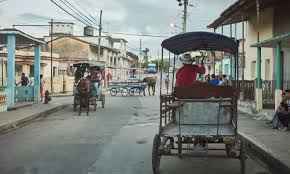
TIEMPOS COLONIALES
La evolución arquitectónica y urbanística de Sagua la Grande es el resultado de un desarrollo económico favorecido por las condiciones naturales de su suelo, su posición geográfica privilegiada con respecto al comercio y los acontecimientos políticos y sociales desde su fundación hasta la actualidad.
En este sentido, en 1830, solo 18 años después de su fundación, ya era el centro económico de una región con más de 26 ingenios azucareros, lo que desde el punto de vista arquitectónico, favoreció la evolución de la tipología de vivienda, con la inserción de residencias de mampostería, pero aún predominan, madera y teja, así como barro y guano. En este período se construye el primer cementerio, la primera administración de correos de la localidad, la primera escuela es fundada por José Cabrera, quien posteriormente fue propuesto, miembro de la Real Sociedad Patriótica de la Habana, por José de la Luz y Caballero .
En 1841 ya había 1216 habitantes en Sagua distribuidos en 253 casas, 4 edificios altos de mampostería, 113 de tableros y tejas, y 115 de barra y guano. Un año después aparece el comando de armas. Los edificios de esta etapa se caracterizaron por su sencillez y sobriedad, la vivienda como tema fundamental del tejido urbano expresa en sus fachadas las cornisas molduradas, diseñadas de forma muy variada, dándole un sello muy particular al abrigo que se repite en un forma muy variada. La belleza se traslada al interior en los patios centrales, cortinas, vidrieras de colores y amplios salones. La monumentalidad de algunas construcciones no logra, sin embargo, obstaculizar la imagen armónica del entorno, es el caso de la casa del Conde More construida durante los años 70 en el siglo XIX cuyo propietario fue el fundador del ferrocarril en la región. y próspero comerciante.

Las primeras calles siguieron espontáneamente, muchas de ellas perpendiculares al río, lo que determinó la anarquía de la urbanización inicial, que luego del trazado de 1849, realizado por Rodrigo de Bernardo y Estrada, tomó características neoclásicas, interpretadas en la amplitud de las calles. y la ortogonalidad de sus bloques. Estos seguían las sinuosidades del río, debido a que la aldea se había formado a partir de la tala de madera, y más tarde de la agricultura tabacalera, que dependía de la proximidad del río por ser la principal vía de exportación.
En 1850 el soldado español Joaquín Fernández Casariego fue asignado al cargo de Teniente Gobernador, quien eximió del cargo a don Matías Lievana. Con Casariego en la jurisdicción, la década de 1850 fue trascendental en el desarrollo de Sagua, pues se construyó el sistema de alcantarillado de la ciudad, se pavimentaron las primeras calles, se consumaron los estudios para la comunicación del pueblo con el resto del país, se llevó a cabo el primer plan director para el crecimiento urbano, y se erigieron los hoteles Ambos Mundos y Cuatro Naciones, se terminó la construcción de la cárcel pública y su plaza, en 1856 se funda el ferrocarril, surge el primer Banco en 1857, nació la primera imprenta, y con ella el periódico del pueblo. El escudo de armas de La Ciudad de Sagua la Grande fue creado en 1863.
El Parque Parroquial La Libertad, construido en 1860, es uno de los exponentes neoclásicos más destacados de la región. Para este período la ciudad mostró un crecimiento acelerado, impulsado por el desarrollo de industrias regionales, principalmente azúcar y sus derivados. Los ingenios azucareros habían multiplicado su producción anual y habían viabilizado el comercio de su producto gracias a la llegada del ferrocarril. Los servicios públicos habían crecido, ocupando una superficie de casi el 20% del terreno edificado, se consigue alumbrado eléctrico en las calles del pueblo, incorporando además una red telefónica. Con esta situación, se le otorgó el título de Villa y adquirió, en 1843, su propio partido jurisdiccional.
Hacia 1890 el censo arrojaba que el territorio tenía una población de 24640 habitantes en el Partido Jurisdiccional Sagüero, con 13 633 habitantes en la ciudad, distribuidos entre los barrios Norte, Sur, Coco solo y San Juan o General Nodarse.
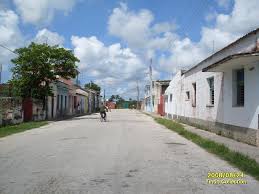
REPÚBLICA
Fruto del desarrollo alcanzado por la ciudad en el primer cuarto del siglo XX, se llevan a cabo una serie de importantes obras sociales, definidas por un carácter pintoresco, y la riqueza expresiva alcanzada en el diseño, llegando a encontrarse distribuidas por todo la ciudad una variada cantidad de viviendas particulares con un marcado valor arquitectónico y artístico. La decoración alcanzada en elementos como rejas y guardapolvos caracteriza la arquitectura de una manera muy especial. En esta etapa se erigieron obras de gran importancia, que a pesar del desarrollo alcanzado en la tecnología, la madera continuó vigente en edificios como el Club de Tenis Femenino y el Cine Teatro Encantamiento; el primero fue un multitudinario club deportivo de escala municipal, y el último permaneció en pie durante casi 80 años constituyendo un hito de gran valor social para la ciudad. El centro histórico que hoy ocupa 66 manzanas con un total de 1 053 inmuebles, el 70% de ellos tienen valor arquitectónico. Destacan tres estilos principales: eclecticismo, neoclasicismo y arquitectura tradicional.
La arquitectura doméstica en las primeras décadas del siglo evolucionó dentro del estilo ecléctico en sus tres variantes como el ecléctico popular que se desarrolló de 1905 a 1914, el ecléctico académico de 1915 a 1920, y el ecléctico evolucionó de 1921 a 1933, predominantemente único- construcciones niveladas acentuando la horizontalidad de los edificios y predominando los elementos clásicos con una decoración mucho mayor que en la colonia.
En el siglo XX comienza un período de auge económico en la localidad, caracterizado por la ampliación de los límites urbanos, iniciándose la construcción de avenidas (Oña, Backer, etc.). El Puerto de Isabela de Sagua se ve favorecido por ser el más cercano del país a Estados Unidos, facilitando la penetración de capitales en el territorio. En 1905 se construyó el puente “El Triunfo” en sustitución del puente de madera que une la calle Martí con la avenida Gómez (hoy 9 de abril), se inauguró la sucursal del Royal Bank of Canada y se construyó el colegio de Los Jesuitas.
La riqueza arquitectónica de la ciudad no se limita al Centro Histórico, pues existen conjuntos aislados de edificaciones de gran valor como la Clínica Yaniz, de estilo ecléctico de principios del siglo XX o las viviendas del Reparto Oña, con la marcada influencia de el estilo neocaliforniano perteneciente a familias acomodadas de los años 20 al 40, la ex colonia española construida en el siglo XIX y remodelada a principios del siglo XX, entre otros. Lo más destacable cuando se mira el entorno construido es el volumen de tradicionales construcciones de madera que se reparten por todo el Casco Histórico Urbano, incluidas las afueras del mismo. Es poco común encontrar el grado de diseño de estos edificios, en otros casos del mismo tipo en todo el país.

El Movimiento Moderno se vigorizó en la Ciudad con el auge económico de los años 50, manifestándose dentro del centro histórico con algunas edificaciones de varios niveles, que se mezclan con el resto dentro de una parcela compacta. Hay ejemplos aislados de viviendas unifamiliares modernas del período prerrevolucionario, la mayoría de las cuales se ajustan a las parcelas comunes y respetan, en la mayoría de los casos, la línea de fachada existente. Sin embargo, la expresión de edificios modernos construidos en las afueras de la ciudad se acerca a la idea de barrios residenciales habaneros, donde prevalecen las edificaciones aisladas, determinadas por el uso de portales, jardines o terrazas; También se construyó el acueducto al puerto de Sagüero el 10 de marzo de 1952 gracias a las gestiones del Representante en la Casa de Sagua Sr. Rafael del Busto Padín con el Presidente Sr. Carlos Prío Socarrás.
POST REVOLUCIÓN
Con el Triunfo de la Revolución el 1 de enero de 1959 se construirían numerosas obras sociales como escuelas, clínicas, hospitales y policlínicas, para las cuales se utilizarían diseños típicos basados en sistemas prefabricados hasta el día de hoy. Estas obras se construirían lejos del Casco Histórico Urbano de la ciudad, por lo que se ha sabido conservar, hasta el día de hoy y a pesar del deterioro logrado, la mayor parte de su patrimonio construido antes de 1930.
PRESENTE
En la actualidad, la ciudad conserva el espíritu neoclásico y ecléctico de su urbanismo y su arquitectura, con reducidas incursiones modernas en su centro histórico que la garantizarían para la condición de Monumento Nacional otorgada el 6 de diciembre de 2011.

ICONOS ARQUITECTÓNICOS
Entre los valores arquitectónicos y urbanísticos más destacables que llegan a nuestros días, la terminal ferroviaria, la Iglesia Católica, La Villa de París, Palacio Arenas, el Grand Hotel Sagua, el Casino Español, y la casa del Conde de Casa Moré, entre muchos otros, destacan.
TURISMO
Antiguamente visitada por comerciantes y personalidades de la cultura universal, la ciudad exhibe profusos edificios de alojamiento ubicados en zonas privilegiadas de su casco histórico urbano, que sobreviven al paso del tiempo a pesar del abandono o cambio de función sufrido tras el declive de la floreciente actividad económica que la envolvió. ellos. Hoy en día, el turismo, además de los valores preciados, es una actividad incipiente en la ciudad, mayoritariamente visitada por familiares de lugareños o huéspedes de la vecina Cayería Noreste de Villa Clara en su recorrido por el centro del país.
Además de la riqueza arquitectónica, histórica y cultural de la ciudad, en la región de la cual es el centro económico, el propio río Sagua, navegable por más de 30 kilómetros desde la orilla de la ciudad hasta su desembocadura en la localidad marinera de Isabela, famosa por sus ostras y su centenaria tradición portuaria; los cercanos Mogotes de Jumagua, segundo en importancia a Cuba y último reducto de los bosques naturales que dieron fama al territorio en épocas pasadas; la Sierra meridional de Jumagua, en la más occidental de cuyas cumbres se encuentra el Parador La Roca, mirador sobre la vasta llanura fluvial; El Embalse de Alacranes, tercer espejo de agua del país; la Cayería Noroeste de Villa Clara, que posee leyendas marinas únicas, embarcaciones atrapadas en sus aguas, la caverna sumergida más profunda del archipiélago antillano (Blue Hole, Ojo del Mégano) y encantadoras playas que seducen con su aislamiento, sus azules de ensueño y su propio arena blanca y fina de perfil suave; el balneario de aguas mineromedicinales de Elguea, conocido internacionalmente por las propiedades curativas de sus aguas termales, entre otras.

El lanzamiento de Sagua la Grande como destino turístico internacional en el marco de FITCuba 2018 marcaría un antes y un después en la historia local. El evento, que tuvo lugar el 4 de mayo de 2018, sería el resultado de la ejecución, con el apoyo decisivo del pueblo, de un amplio programa de inversiones encaminado a restaurar el antiguo esplendor de la ciudad, ocasión que serviría para la reapertura de el Gran Hotel Sagua y la inauguración del Hotel Palacio Arenas, íconos arquitectónicos de la Villa del Undoso, así como otras importantes instalaciones de servicio turístico, obras sociales y cultura. Este programa, aún no concluido por la gran epidemia que azota al pais (pandemia), tiene como objetivo, paralelamente a la restauración de todo el casco histórico urbano declarado monumento nacional, el rescate de edificios antiguamente dedicados a la “industria libre de humo” y la ampliación de la red extra hotelera, así como la construcción de hasta 1830 habitaciones en los legendarios cayos Esquivel y Cristo de la cercana Cayería Noroeste de Villa Clara, Eco-alojamientos y restaurante ecológico en el área protegida de Mogotes de Jumagua, habitaciones cercanas al embalse de Alacranes, la remodelación de el Parador La Roca y la conclusión del proyecto parcialmente terminado de Marina Charter Isabela de Sagua, estrenado en FITCuba 2018, entre otros. Por sus excepcionales valores naturales, histórico-culturales y paisajísticos, Sagua la Grande y su vasta región están llamadas a convertirse en los próximos años en un prometedor polo turístico de Cuba.
TRANSPORTE
Sagua es atravesada en el medio por la carretera nacional “Circuito Norte” (CN), que recorre la parte sur de su municipio. Es servida, junto con los municipios de Isabela, Sitiecito y Nueva Isabela, por la línea férrea Santa Clara-Cifuentes-Sagua-Isabela, y por el ramal Sagua-Corralillo.
GENTE NOTABLE
Mel Martinez, exsenador de los Estados Unidos (R-FL); José Luis Robau, Patriota; Wifredo Lam, pintor; Antonio Machín, cantante; Alberto Morales Ajubel, ilustrador y pintor cubano-español; Ramón Solís, flautista; Joaquín Albarrán, médico; José “Pepe” Núñez, pintor; Carlos Alvarez del Castillo, locutor de R&TV. Presidente de la Municipalidad de Sagua la Grande (E); Pedro Suárez Rojo, naturalista, explorador; Miriam Cajiga, activista del Partido Republicano y Vicepresidenta de la Municipalidad de Sagua La Grande en el Exilio; Esteban Gallard, boxeador “Kid Charol”; Peter Henry Emerson, fotógrafo; Enrique Labrador Ruiz, escritor; Elizabeth Pérez, periodista cubano venezolana; Emilio Núñez, Patriota; Panchito Rodríguez, doctor; Concepción Campa Huergo, científica, desarrolló la vacuna contra la meningitis B; Rodrigo Prats, compositor de música; Julián de Palenzuela, barón de Casablanca Edelmira Sampedro y Robato, condesa de Covadonga; Enrique Sacerio-Garí, escritor, profesor, artista, activista; Oscar B. Cintas, industrial, mecenas de las artes; Alfredo Sosabravo, pintor; Justo Espinosa Mondéjar, abogado; Baudilio Espinosa Huet, escritor, actor; Jorge Luis “Cuco” López, actor; Conrado Marrero, jugador de béisbol; Manuel Gayol Fernández, escritor, profesor, abogado; César Leal, pintor; Asenneh Rodríguez, actriz; Jorge Mañach Robato, escritor, abogado; José Antonio Evora, periodista; Juan de Dios de Oña y Ribalta, filántropo; Enrique González Mántici [de], músico; Raúl Villavicencio Finalé, Historiador, Profesor; Cayo Bécquer, cantante; Michel Martín Pérez, poeta; Carlos Rendo, abogado y político de Nueva Jersey; José Guardiola Alfert, Notario Público, Artista
Cruz Alvaré, médico; Arnaldo Miguel Fernández Díaz, Periodista, Escritor, Abogado, Profesor; Jorge Laureano Moya Rodríguez, Catedrático, Investigador; Yoel Rivero Marín, Productor de radio y televisión.
Agencies/ Wiki/ Internet Photos/ YouTube/ Arnoldo Varona/ www.TheCubanHistory.com
THE CUBAN HISTORY, HOLLYWOOD.



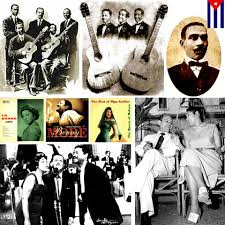 EL “DIVINO” BOLERO, UN GÉNERO MUSICAL NACIDO EN CUBA. SU RADIOGRAFIA.
EL “DIVINO” BOLERO, UN GÉNERO MUSICAL NACIDO EN CUBA. SU RADIOGRAFIA.  THE “DIVINE” BOLERO, A MUSICAL GENRE BORN IN CUBA. ITS RADIOGRAPHY.
THE “DIVINE” BOLERO, A MUSICAL GENRE BORN IN CUBA. ITS RADIOGRAPHY.


